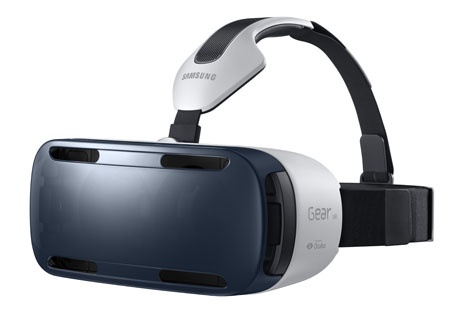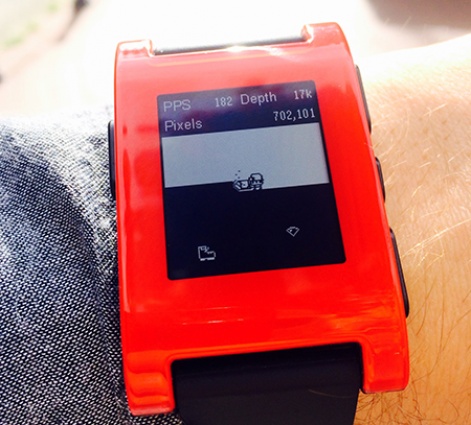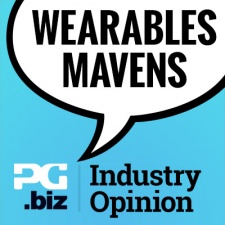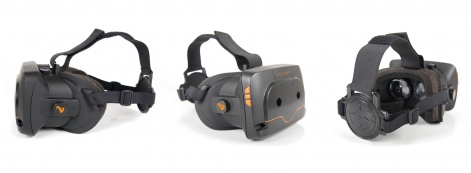2014 promised a revolution in wearable technology and virtual reality gaming, but as the year comes to a close, we're forced to question whether those promises were fulfilled.
The truth is both these exciting new lifestyle technology avenues opened up before us, but access has been limited.
Rather than the trends catching fire and bringing forth a new world of connected, immersive gaming, they've not yet delivered it.
But perhaps this is no bad thing. Certainly it gives us and our Wearable and VR Mavens plenty to discuss. We asked them:
What progress has been made throughout 2014 in the wearable tech and/or VR markets, and what can we expect to see in 2015?
Which new opportunities are you most excited about?

I founded the Wearable Technology Practice at Accenture and lead day-to-day operations. In 18 months, the Wearable Practice has grown to include three Fortune 100 clients and several hundred Community of Practice members. My responsibilities include oversight of R&D, business development, sales, delivery and thought leadership.
I've co-authored a patent on Augmented Reality Safety Glasses, led the development of a ground-breaking Google Glass medical Proof of Concept for Philips (http://www.youtube.com/watch?v=ssldTFWBv3E) and written the whitepaper "Putting Wearables to Work in the Enterprise (http://www.accenture.com/SiteCollectionDocuments/PDF/Accenture-Putting-Wearable-Displays-to-Work-in-the-Enterprise.pdf).
In 2006, I worked as a developer to build a technology solution for a Wearable shirt prototype known as the LifeShirt.
In 2014 there were lots of wearable device releases, particularly in the smartwatch space, and the market continued to saturate. At the same time, we saw a growing realization that wearables have powerful use cases in the enterprise - and for good reason.
With more than 75 million “deskless” workers who use their hands to do their jobs in the US alone, wearables present a huge opportunity for them to jump on the mobility bandwagon and integrate data into the work they do every day.
In 2015, there’s no doubt that wearables will continue to take hold.Brent R. Blum
As such we saw increased interest from our enterprise clients in wearable technologies, exploring devices, conducting pilots and moving toward large scale deployments.
In 2015, with the next generation of Google Glass and the release of Apple Watch, there’s no doubt that wearables will continue to take hold. In the enterprise space, we’ll see a growing number of wide scale deployments that capitalize on the significant value proposition wearable devices can deliver.
In the consumer realm, although hardware cycles are long, we can expect to see wearables become more indistinguishable from everyday glasses and watches, further driving adoption as the technology becomes more seamlessly integrated into our everyday lives.

In November 2012, I quit my job, moved across the country, and started working full-time as an indie game designer. My second commercial title was Bombball for Ouya, Mac, and PC. In late 2013, I won the Oculus VR Jam with a prototype called Ciess. Now, I’m working on turning Ciess into a full game called Darknet, set to release alongside the Oculus Rift. It’s by far the largest project I’ve ever worked on.
So far, this whole game development thing has been awesome.
The pace of change in 2014 was stunning. Last December, the Oculus Rift DK1 was the state of the art. Since then, we've seen the Crystal Cove prototype, the Oculus Rift DK2, Sony's Project Morpheus, the Crescent Bay prototype, and Samsung's Gear VR.
The Gear VR surpassed all my expectations about what mobile VR could do. The experience is smooth, hi-res, and untethered.

Right now, the only major limitation on the Gear VR is its lack of positional tracking, but I look forward to seeing what progress 2015 will bring. At Oculus Connect, John Carmack pointed out that Samsung's hardware tech ticks forward twice a year, and I'm excited to see how Oculus and Samsung iterate on the Gear VR.
But after seeing the Crescent Bay prototype in September, it's desktop VR that really excites me. It was that device that gave me my first real taste of presence. And once you've experienced that, the future of VR starts to look very promising indeed.
In 2015, VR is going to hit the consumer market, and it's going to blow everyone's minds.E McNeill
It's hard to talk about presence. For one thing, it's entirely subjective, and I often cop out by saying "you have to experience it for yourself". But it's also heavily dependent on boring technical details. Usually, when a nerdy technology enthusiast starts gushing about marginally higher resolutions, or a few more degrees of FOV, or a few milliseconds lower latency, I ignore it, safe in the knowledge that I probably would never be able to notice the difference.
But VR is a rapidly-maturing technology, and one that's particularly sensitive to these little improvements. At some point, a threshold is crossed, and presence is achieved. I can't tell you what was so different about Crescent Bay, but some combination of these tiny refinements ultimately produced magic.
When the Oculus Rift kicked off this new wave of VR enthusiasm, it already had a hardcore audience waiting for it and wanting it to succeed. The Rift was a big step forward, but that early crowd was relatively easy to impress. Now, VR is poised to take the next step.
In 2014, VR spread widely among developers and enthusiasts, and it blew our minds. In 2015, VR is going to hit the consumer market, and it's going to blow everyone's minds.
2014 was the start of wearable gaming. The evolution just began during Mobile World Congress and now in the holiday season we're already seeing the third generation of the smartwatches. That’s an amazing speed and the improvements are extreme. HandyGames started to invest into wearable games in 2014 and the first titles already hit the market successfully.
What amazed me is the fact that new features like the step counter, pulse and fitness APIs can be used for gaming. This allows us to deliver completey new kind of games. Titles like Vegas Fruit Slots shows that you can use your real world steps and convert them to in game currency.
We're currently working on new projects for the holiday season which even use more wearable features. So I'm totally happy to be in the market and change the world of gaming a little bit. I'm sure that CES and MWC in 2015 will show that wearables will reach mass market very soon.
Of course, in 2015 Apple will join the ring with their watch as well, but perhaps we'll already see the fourth generation of Android Wear before it's even out. The coming two years will be an important year of cooperation between the old traditional watch industry and mobile handset manufacturers to drive the next big thing together.
About VR, I'm not yet sold on gaming on as I still see too many users feel dizzy after they played with it.
In terms of smartwatches 2014 seemed like a warm-up. Everything is now on Apple to crack the market open by proving the use paradigm early next year.
If they can do that (which I’m confident they can) then others will follow into the space and make decent facsimiles of the devices at a lower price point. Specifically, I’m looking at Android Wear.

However, I think 2015 is important but less boom-or-bust for Oculus and other VR devices. I’m not yet convinced that a headset can offer enough of an experience to compete with the convenience and usability of a traditional screen.
But then I’ve only used DK1. Indeed, headsets are only one piece of the VR jigsaw. VR seems to me to have a much longer timeline of adoption and I’m sure Facebook aren’t thinking of a single digit year count to recoup.

Game Designer/Developer programmer, artist and cosplayer.
Pixel rift is a reflection of my life experience playing games since I can remember.
This game is my final Project is for my masters degree in Games Design and Development at The National Film & Television School. Back in Brazil I ran my own Pie business, but that's another story.
I almost forgot to report that I also love cooking sushi and no one beat me eating ice cream.
We have pushed the boundaries of VR in 2014, especially following the announcement of Facebook buying Oculus Rift. This changed the course of history for VR. Now, other companies are opening their eyes and realising that virtual reality is not just for hardcore gamers, but for everyone.
The first question I have to answer everytime someone plays my game, Pixel Rift: 'When can I buy an Oculus Rift?'Ana Ribeiro
The announcement of Project Morpheus from Sony was good to put pressure on Oculus and help to balance the market. Oculus released the DK2 this year and, together with Samsung, announced the Gear VR.
Lots of companies are now looking at marketing for VR, and new headsets are being developed right now and… it just keeps coming!
I can't wait to see all the VR headsets released next year. I think that is what we developers and the general public are looking to happen in 2015. The first question I have to answer everytime someone plays my game, Pixel Rift: "When can I buy an Oculus Rift?"
To make VR happen we need big franchises releasing VR headsets to the general public. Then developers can release their games and we can start to talk about business.
I think that year 2014 saw a huge step for VR. We got Oculus DK2 with positional tracking and much better display, which significantly helped with motion sickness and improved the immersion and overall pushed the experience miles forward from DK1.
And as the Crescent Bay prototype showed us, CB1 in 2015 (presumably) is going to push it even further, to the point where it's a compelling device for regular users.
We saw a lot of new products and companies aimed at VR as well as more polished content as developers get more familiar with developing for VR, which will be important factor for the launch. The awareness of virtual reality spread like fire. For example people are doing VR "let's play" videos, watched by millions of people. Google reacted with Google Cardboard, and there's even South Park episode on the Oculus. It's getting out there!
I'm excited for the consumer launch of VR, where it'll no longer be marketed as developer device, but at the same time I'm anxious to get good quality content ready, to be one of the first to offer people a good quality VR experience.
I think that there are many exciting uses for VR outside of gaming. I'm working on a project involving VR in education/infoverse and we're planning to open it up to more people and allow them to create exciting content for VR, from within VR.



























